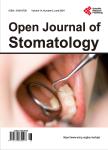The effect of chlorhexidine on plaque index and mutans streptococci in orthodontic patients:A pilot study
洗必泰对正畸患者菌斑指数和变形链球菌的试验研究作者机构:Department of Restorative DentistrySchool of Dentistry of AraraquaraUniversity of the State of Sao Paulo(UNESP)AraraquaraBrazil Department of Pediatric ClinicsPreventive and Social DentistrySchool of Dentistry of Ribeirao PretoUniversity of Sao Paulo(USP)Ribeirao PretoBrazil Private PracticeAracajuBrazil Department of Clinical AnalysisToxicology and BromatologySchool of Pharmaceutical Sciences of Ribeirao PretoUniversity of Sao Paulo(USP)Ribeirao PretoBrazil
出 版 物:《Open Journal of Stomatology》 (口腔学期刊(英文))
年 卷 期:2013年第3卷第6期
页 面:323-328页
主 题:Chlorhexidine Self-Polymerising Acrylic Removable Orthodontic Appliances Mutans Streptococci Plaque Index
摘 要:Aim: The purpose of this study was to assess chlorhexidine effects on plaque index and salivary levels of mutans streptococci (MS) when used as the immersion solution for removable orthodontic appliances and added to their acrylic resin composition. Methods: Forty-five patients (6 to 12 years old) were randomly assigned into three groups with 15 patients each. Group I (control)—without orthodontic appliances disinfection;Group II—removable orthodontic appliances which had been immersed in 0.12% chlorhexidine digluconate overnight (8 hours), and Group III—orthodontic appliances in which 0.12% chlorhexidine digluconate solution had been incorporated into their resin composition. Saliva was collected for quantification of MS and evaluation of plaque index was performed before and after installation of orthodontic appliance at 0, 2, 4, 6, 8, and 10 weeks. Data were analyzed by using analysis of variance. Results: Number of MS colonies in saliva and plaque index showed no statistically differences among groups at the different periods (p 0.05). Conclusions: It could be concluded that chlorhexidine incorporation into the acrylic resin of removable orthodontic appliances at 0.12% concentration and immersion of the appliance into 0.12% chlorhexidine solution were not effective in reducing plaque index and the number of MS in saliva.



